#women's fashion catalogue
Explore tagged Tumblr posts
Photo
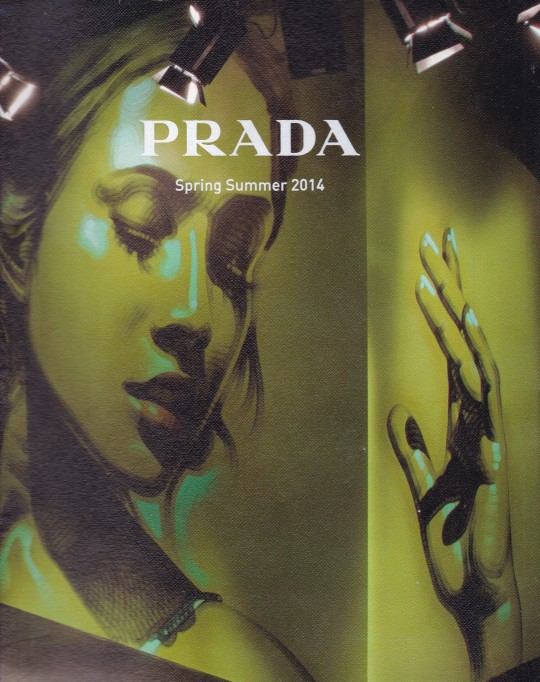
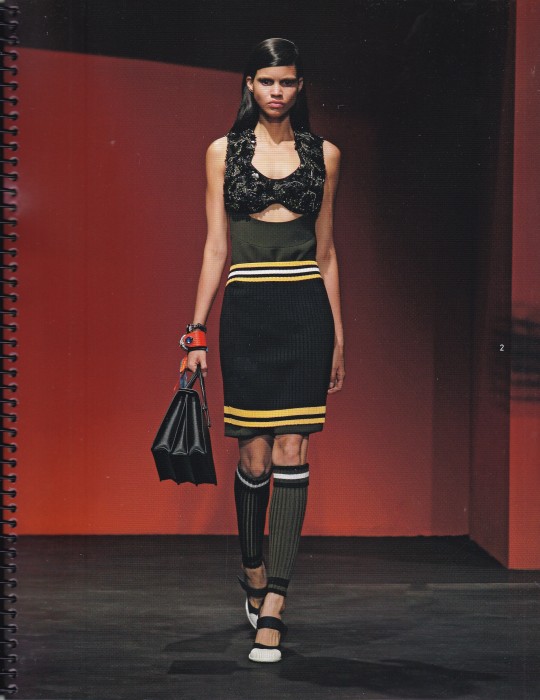
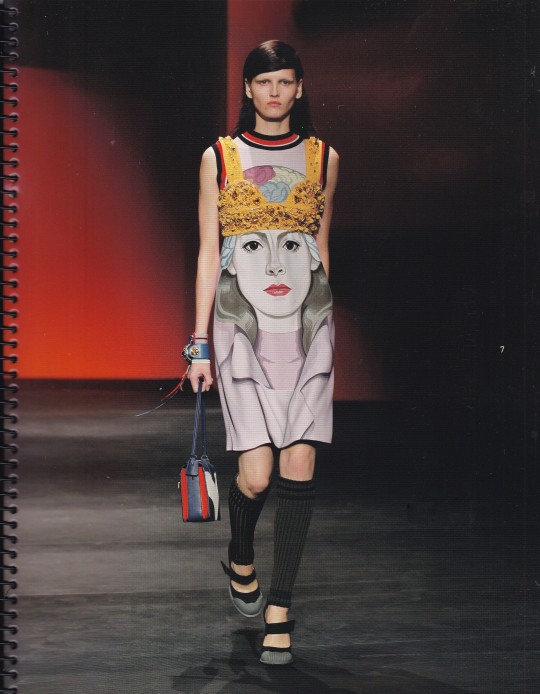

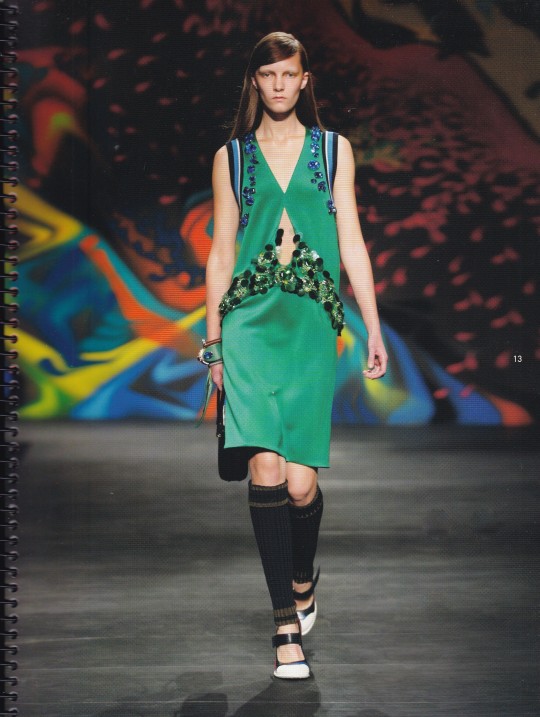
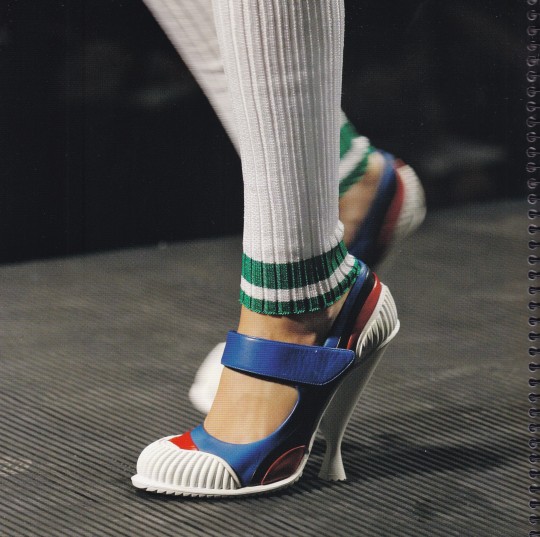


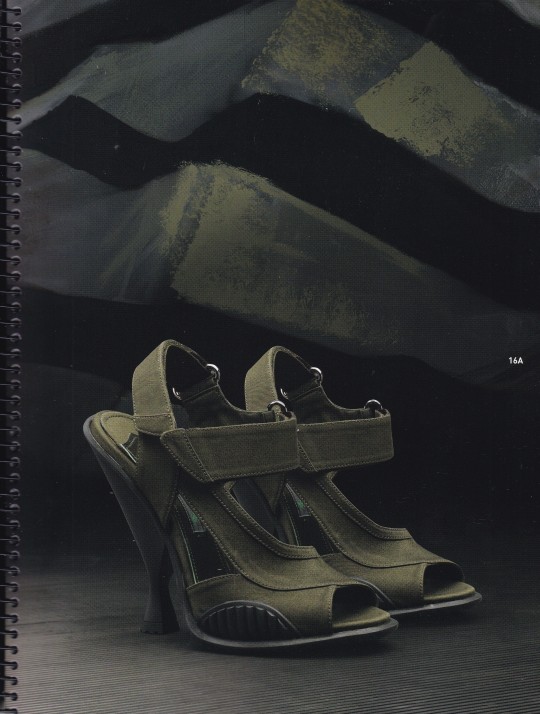
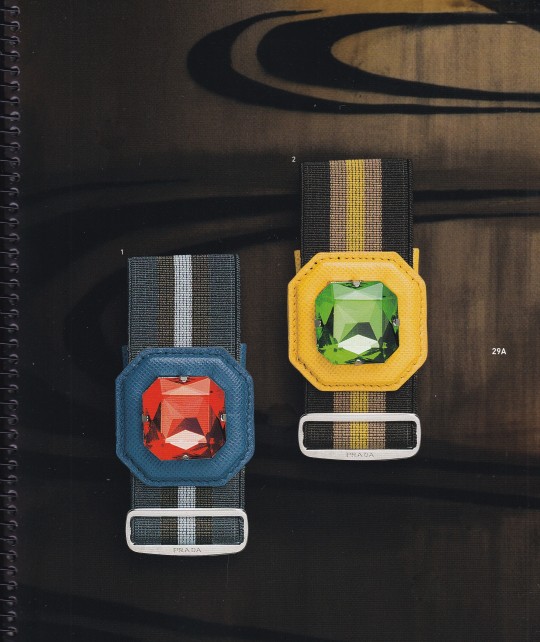
Prada Spring Summer 2014
Prada, Milano 2013, 188 pagine, 24 x 28 cm
euro 90,00
email if you want to buy [email protected]
Prada to present “In the Heart of the Multitude”, featuring the work of four muralists and two illustrators on the walls of the S/S14 Women's fashion show On September 19, 2013, Prada will present In the Heart of the Multitude, a new project in their long tradition of creative collaborations. As part of the environment for the Spring/Summer 2014 Women's fashion show, Prada invited muralists Miles “El Mac” Gregor, Mesa, Gabriel Specter, and Stinkfish, and illustrators Jeanne Detallante and Pierre Mornet, to engage themes of femininity, representation, power, and multiplicity on the walls of the Via Fogazzaro show space in Milan. The concept originated from an interest in the political wall art from Mexican muralists such as Diego Rivera, David Alfaro Siqueiros and José Clemente Orozco combined with on-going exploration into large-scale wall installations at the Prada Broadway epicenter and other sites worldwide. In conjunction with 2x4, the New York-based design firm and long-time creative collaborator, Prada conducted a global research and commissioned these six young artists and illustrators, known for their distinctive style, color sensibility and approach to figurative representation, to work directly in the show space. The walls were reshaped to maximize the structural variation and provide multiple planes on which the artists could realize their visions.
orders to: [email protected]
twitter: @fashionbooksmi
flickr: fashionbooksmilano
instagram: fashionbooksmilano
tumblr: fashionbooksmilano
12/02/23
#Prada#Spring Summer 2014#women's fashion catalogue#Mexican muralists#fashion collection catalogue#fashion books#fashionbooksmilano
11 notes
·
View notes
Text
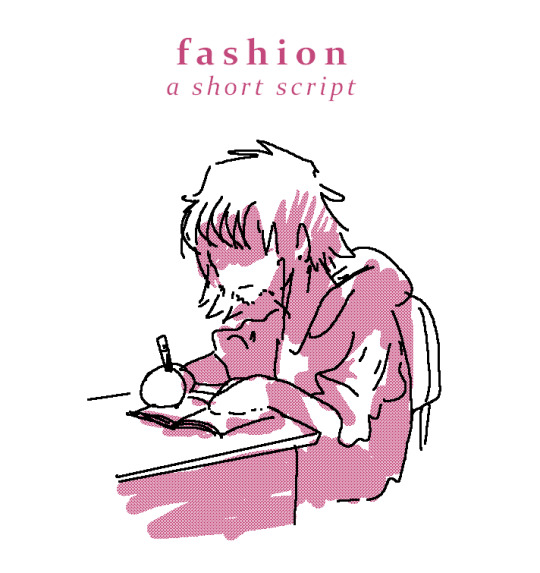
Had to write a three-page screenplay script for a "Discovery" for class. Didn't have any further instructions. It's super off-the-cuff, but I wanted to share it. Happy pride <3
INT. COLLEGE DORM - NIGHT.
A college student sits at his desk, sketching. It's a one room apartment, and his roommate is sound asleep. He's sketching in the light of a single lamp, being quiet. The student, GABE (male, 19) is drawing a cartoon version of himself. He's studying outfits from a fashion catalogue, drawing himself in different ones. He bites the tip of his pencil, not feeling the piece he's working on. He rolls his chair back, reeling away from the desk. Gabe puts his hands in his hair, leaning back and looking at the ceiling. He lets out a long exhale. It's late.
After a moment, he rolls back to the desk. Tapping the pencil to his head, he flips through the pages. It's an unremarkable task, stopping on a random page. Oh, the women's fashion section. It has simple, practical outfits for girls, including a jean skirt. Gabe peers at it. Fuck it, it's late. He erases the pants of one of his drawings and pencils in a skirt instead.
He pauses.
He stares at it.
Something here is weird.
He goes to erase it, but once he does, he just draws it in again. This time with more care. More detail. He stares at it again.
Tears well up in his eyes.
GABE
(whispering)
…what the fuck?
Gabe, confused, touches his hand to his eye. He looks at the tear on his finger. Huh? He stares at the drawing again. He looks back at his roommate, sound asleep. He's having some sort of moment, but he has to be quiet. He frantically looks back at his sketchbook.
GABE
(whispering)
Uh…
A beat.
Gabe starts drawing himself again. In the women's fashion this time. It's like a whole different world. He's drawing like crazy. It's all flowing out of him. He draws another.
And another. Slowly, details start to adjust in his art.
Longer hair. Longer eyelashes. Daintier poses. More smiles.
He's got tears running down his face, but he's not wearing any emotion. He's not sure what to think.
CUT TO
An indeterminate amount of time later. Gabe stares at his notebook. It's full. It's lots of drawings of him.
As…well, he guesses as a girl. But he's not one. He flips through the book again, then turns towards the dark window his desk resides next to. He looks at himself. Patchy facial hair and a shaggy haircut.
CUT TO
INT. DORM HALLWAY - NIGHT
Gabe rushes down the hallway, looking frantic. He's carrying a bag.
INT. DORM BATHROOM - NIGHT
It's quiet inside the bathroom. No one else occupies the space. It's just him and his reflection. His reflection? Maybe their reflection. Her reflection? No, that's not right. Is it right? Gabe stares at himself intently. The whirring of a trimmer cuts through the silence. He brings it up to his facial hair, shearing away a week's worth of fuzz.
He looks at himself like it's not him in the mirror. He holds a hand up to his face, feeling it.
It's not enough. Not yet. He has to know.
He gets out his phone and starts typing.
HOW TO SHAVE FACIAL HAIR OFHG
He frantically types, misspelling. He backspaces like his life depends on it.
HOW TO SHAVE FACIAL HAIR OFF ALL
THE WAY
He quickly scans an article and then gets to work, pulling some miscellaneous bathroom supplies out of his bag. Shaving cream. A razor. Gifts for cleaning up at college. He wets his face. Applies the shaving cream. Does careful strokes down his cheeks and neck. Slowly, someone reveals themselves.
They lean down, splashing themselves with water. They look up, and it's a different person. She's completely shaved her facial hair off. Gabe hasn't seen herself like this since she was in freshman year of high school, before facial hair was even an option. She reaches up and touches her face, smooth to the touch. She stares, enamored. A moment. She grabs a towel and dries her face off, and then looks again. She's so…different. But that's her! That's Gabe! Is it Gabe? She doesn't know anymore. A close up to her eyes. Her nose. Her lips. Her neck. It's all so new. She starts laughing. She laughs, and tears well up in her eyes a little. She laughs some more. In moments, she's full on crying tears of joy. She doesn't know why. But she is! That's her!
CUT TO
INT. SECONDHAND - DAY
Gabe is at a clothing rack, searching for something. She looks around, a little embarrassed. She browses for a moment before finding what she wants. She passes by some more racks carefully, trying not to be too obvious. She slips into the changing room, then locks the door.
GABE
…okay.
Gabe unbuckles her belt. In a moment, she's wearing black leggings. She hikes them up, then unclips a gaudy skirt from the clothes-hanger. She stares at it, a little scared of it and what it represents. She bites her lip. She stretches it out and then steps in. She looks up at the mirror.
Oh shit, that's her! That's her!
Gabe is wearing a long, patterned skirt and a tee-shirt. The colors don't match at all, and the patterns don't either.
She looks a bit like a yard sale of a person. But it's her!
She spins around, watching the fabric flow out from her hips in a whirlwind of stripes and insignia. She laughs again.
This is her! This is her!
This is her!
2K notes
·
View notes
Text

Amanda was newly divorced, newly 40 and needed a confidence boost. She impulsively called the number on the ad for a photography model on the local Starbucks message wall. A cheerful, younger sounding woman named Bethany answered, and Amanda was immediately interested in the opportunity.
Bethany gave her the address and Amanda visited the next day. Bethany designed jewelry and other fashion accessories and needed someone to model them for her online catalogue. Amanda was thrilled at the prospect.
The women spent a few hours together in Bethany’s yard and small studio and got on swimmingly. Amanda moved through the posings Bethany wanted. It was very easy to follow Bethany’s lead. They shared some wine as the afternoon progressed and Amanda was certainly feeling her confidence boosted.
The session seemed to be nearing its close when Bethany said, “I’m wondering…no, no, never mind”.
“What is it?”
Bethany had aroused her curiosity.
“Well I’ve also designed some more ‘intimate’ items. I don’t imagine you’d want to model those at all…”
“What kind of intimate items?”
“If you want to come inside to my bedroom, I could show you.”
Amanda took the bait.
“I suppose there’s no harm in looking.”
Bethany didn’t give Amanda the chance to change her mind.
“Great, let’s go.”
She took Amanda’s hand and led her inside. Amanda felt a little surge of nervous energy pulse though her when Bethany took her hand.
Amanda sat in a chair in the bedroom and Bethany went to her closet. She brought out several sexy undergarments and laid them on the bed.
“You would look amazing in any of these, Amanda. I really think you should try some on for me. I don’t have to take any pictures if you don’t want.”
Bethany’s voice and the compliment got the best of Amanda.
“Ok—what should I try on?”
Bethany picked up a sheer white tank top body hugger and matching bikini panties.
���How about these?”
“Ok, but no pictures.”
She took the pieces and went to the bathroom to change. She felt a little embarrassed in such sheer things, but for some reason she wanted to please Bethany.
She walked into the bedroom and Bethany gasped.
“Oh, Amanda, you look amazing! You are so sexy!”
Amanda smiled shyly, pleased but still a little embarrassed.
“Work it, girl, give me some poses, like before.”
Amanda moved across the room, tentatively at first, but she got more comfortable. Bethany really seemed to be enjoying it, and admittedly, Amanda was too. When Bethany took a few pictures, Amanda didn’t protest.
Bethany came closer, reached out, and pulled a strap off Amanda’s shoulder, exposing one breast.
“I can pretty much see your boob anyway, so what’s the harm, right?”
Amanda just nodded and let herself be posed. Bethany took some more pictures.
Bethany then came and stood behind Amanda. She put her fingers inside Amanda’s panty waistband and whispered in Amanda’s ear.
“One more adjustment, OK?”
Amanda nodded. Bethany lowered her panties and Amanda willingly stepped out of them. Bethany stood in front of her again and took some pictures. Amanda looked down shyly.
Bethany then put her camera on a tripod and pulled off her dress, revealing undergarments very similar to those Amanda had tried on.
“Ok Amanda, I’m setting the camera on auto, and you’re going to join me on my bed, aren’t you?”
Bethany held out her hand.
Amanda just nodded and accepted Bethany’s hand, ready to be led some more.
172 notes
·
View notes
Note
I’m so sorry if you’ve already answered this somewhere, but how do you design your characters?
I’ve been trying to make an OC from the prohibition era and it turns out there’s basically nothing to work with for men’s outfits, so I’m curious how you made this many that look unique and fitting to the characters
There is so much to work with, though! You will tend to find more of a focus on variety in women's fashion, but there is still quite a lot of menswear to ogle too. I suppose it's just a matter of searching out ideas and inspiration in the rights corners. Here are a few suggestions:
Old Clothing Catalogues -
Collections from Sears-Roebuck and other popular clothing retailers are pretty easy to find compiled into relatively inexpensive books, or just floating online.
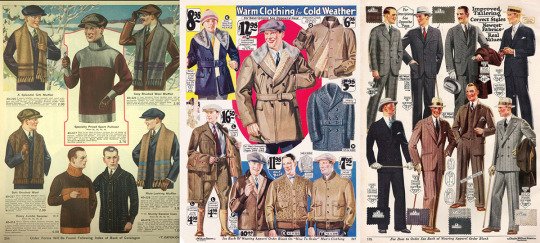
A fair bit of it is in the public domain now.
--Here's an entire 1922 catalogue of stuff to flip through.
-----------------
Contemporary Artwork -
Some phenomenal illustrators were working in this field amidst the "Golden Age of Illustration" and featured prominently on the covers of magazines and on the ads inside. There was a lot of emphasis on fashion.
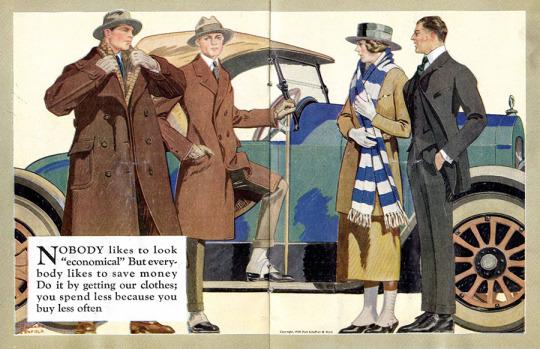
Collier's and The Saturday Evening Post are a couple of the more prominent and easily searchable resources. The costuming on the cover art always has a lot of personality.
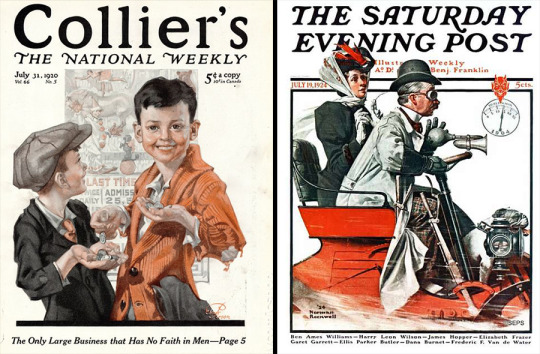
There's Rockwell, of course, and it's almost impossible to go wrong with J. C. Leyendecker. He's probably best known for his Arrow Collar ad art, but even his sock ads are like…

There were numerous other amazing and influential illustrators working at the time too. Here's a list of some of them. Here's a bonus Henry Raleigh featuring some of his fabulously-dressed people.
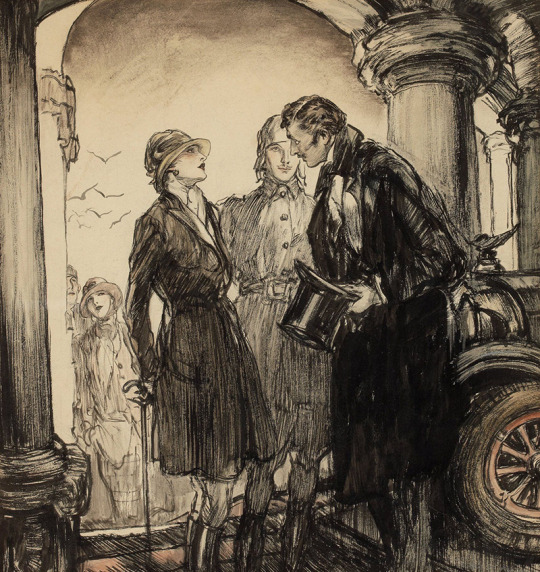
-----------------
Blogs and Articles -
There are so many of them! If you want historical accuracy, be wary of write-ups pulling all of their references from film and television. There's nothing wrong with using those for inspiration if you aren't too concerned with historicity, but there are some pretty comprehensive and well-researched things out there with more of an eye on actual fashion history too:
--Gentleman's Gazette - What Men Really Wore in the 1920s
--The Fashionisto - 1920s Men's Fashion
-----------------
Digital Collections -
There are numerous digital historic image collections stemming from universities, museums, libraries, and the government that are free to peruse too.
--The Metropolitan Museum has a searchable catalog of exhibits that includes fashion and photos
--Here's some things from the New York Public Library
-----------------
Photos at Large -
If you aren't sure where to start, image searching for any of Hollywood's early celebrities will typically turn up a bevy of production stills and promotional photography featuring a variety of fashions. Here's a random Getty images search for Harold Lloyd. A lot of standard 3 piece suits, but a lot of stuff with added character too.
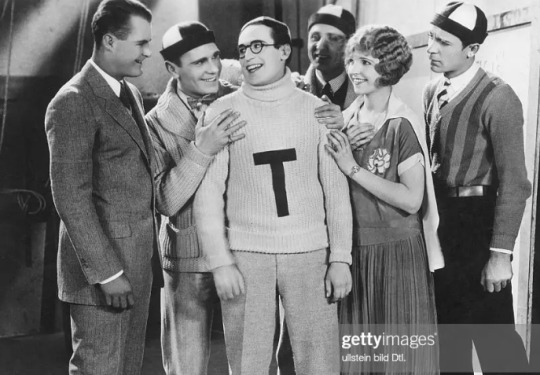
Photography was generally quite accessible by the 1920s, though, and you can find a lot of authentic photos of people from all walks of life, out in the wild wearing all sorts of clothes.
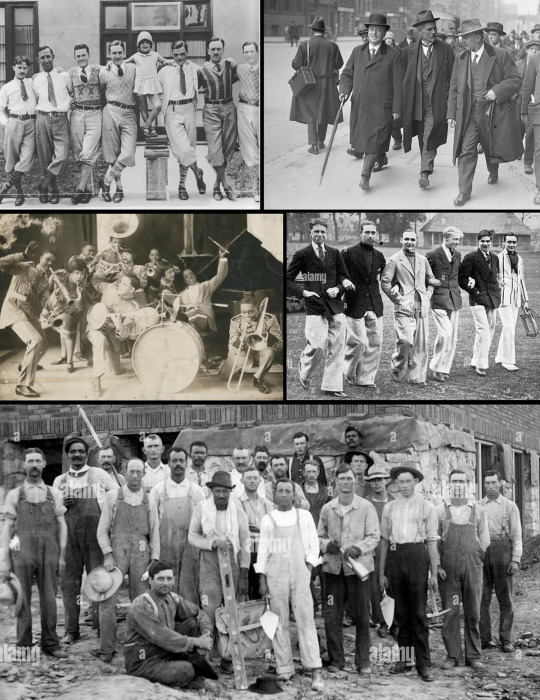
This is by no means the limit to the resources available, but hopefully it'll provide some leaping-off points for designing looks for your characters!
3K notes
·
View notes
Note
Hello!
I am an aspiring author who struggles with accurately portraying historical clothing, and I stumbled across your blog while searching for photographs and information on late 19th century/USA Gilded Age fashion. From the research I've seen compiled across books/the internet, the clothing of the upper class from that area is very well documented in paintings, garment catalogues, photographs, museums, etc....but finding information on what the day-to-day wear of normal people was like is proving much more difficult. Since you seem to be knowledgeable in the subject of historical clothing in this approximate time period, I was wondering if you knew about any good resources to learn more about what people who couldn't afford to follow upper class trends were wearing in the general era as well as any general information around these items.
If it helps, I'm focused on eastern and southeastern United States farming/small railroad town/mountain mining/gulf coast wetland communities, but even just more general resources about what sort of clothing that the average poor person during the Gilded Age wore would be greatly helpful. I've been able to find a few photographs here and there, but these probably aren't an accurate depiction of a persons' 'day-to-day' wear, and I also haven't found much on how women learned to sew homemade clothes, what garments if any would have been bought, where people in rural areas would have sourced their cloth, what undergarments were like, how work shoes were made & aquired, ect.
Please feel free to ignore this if it isn't something you're interested in answering as I'm sure you get a lot of asks, but I'd greatly appreciate it if you have any pointers!
So here's the thing about 19th-century clothing:
in many ways, it's the same all the way down
now, that's a serious generalization. is a farm wife in Colorado going to be wearing the same thing as a Vanderbilt re: materials, fit, and up-to-the-minute trendiness? obviously not. but because so much of what people wore back then has only survived to the present day in our formalwear- long skirts, suits, etc. -we tend to have difficulty recognizing ordinary or "casual" clothing from that period. I also sometimes call this Ballgownification, from the tendency to label literally every pretty Victorian dress a Ball Gown (even on museum websites, at times). Even work clothing can consist of things you wouldn't expect to be work clothing- yes, they sometimes worked in skirts that are long by modern standards, or starched shirts and suspenders. Occupational "crap job clothes" existed, but sometimes we can't recognize even that because of modern conventions.
A wealthy lady wore a lot of two-piece dresses. Her maid wore a lot of two-piece dresses. The trailblazing lady doctor working at the hospital down the road from her house wore a lot of two-piece dresses. The factory worker who made the machine lace the maid used to trim her church dress wore a lot of two-piece dresses. The teenage daughter of the farm family that raised the cows that supplied the city where all those people lived wore a lot of- you get the idea. The FORMAT was very similar across most of American and British society; the variations tended to come in fabrics, trims, fit precision, and how frequently styles would be updated.
Having fewer outfits would be common the further down the social ladder you went, but people still tried to have as much underwear as possible- undergarments wicked up sweat and having clean ones every day was considered crucial for cleanliness. You also would see things changing more slowly- not at a snail's pace, but it might end up being a few years behind the sort of thing you'd see at Newport in the summer, so to speak. Underwear was easier to make oneself than precisely cut and fitted outer garments for adults (usually professionally made for all but the poorest of the poor for a long time- dressmakers and tailors catering to working-class clientele did exist), but that also began to be mass-produced sooner than outer clothing. So depending on the specific location, social status, and era, you might see that sort of thing and children's clothing homemade more often than anything else. Around the 1890s it became more common to purchase dresses and suits ready-made from catalogues like Sears-Roebuck, in the States, though it still hadn't outpaced professional tailoring and dressmaking yet. Work shoes came from dedicated cobblers, and even if you lived in isolated areas, VERY few people in the US and UK wove their own fabric. Most got it from the nearest store on trips to town, or took apart older garments they already had to hand and reused the cloth for that.
I guess the biggest thing I want to emphasize is that, to modern eyes, it can be very hard to tell who is rich and who is anywhere from upper-working-class to middling in Gilded Age photographs. Because just like nowadays a custodial worker and Kim Kardashian might both wear jeans and a t-shirt, the outfit format was the same for much of society.
Candid photography can be great for this sort of thing:

Flower-sellers in London's Covent Garden, 1877. Note that the hat on the far right woman is only a few years out-of-date; she may have gotten it new at the time or from a secondhand clothing market, which were quite popular on both sides of the Atlantic.
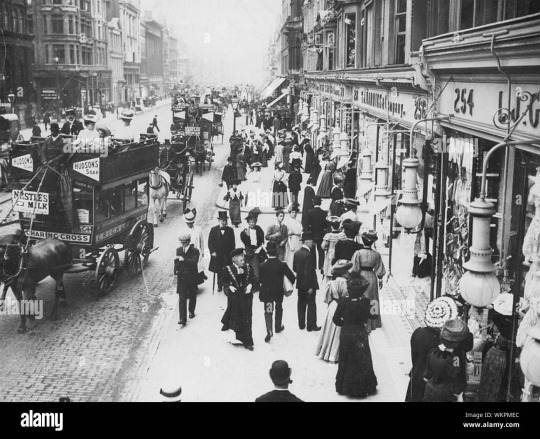
Also London, turn of the 20th century.

A family in Denver, Colorado, c. early 1890s.

Train passengers, Atlanta, Georgia, probably 1890s.
Hope this helps!
#ask#anon#long post#dress history#clothing history#fashion history#one of my friends once said 'most stuff made by historical costumers online isn't out of the question for a maid on her day off'#'or a middle-class wife'#and they're so right#it just ALL looks Fancy to modern eyes
105 notes
·
View notes
Note
Not saying I would sacrifice a limb for the story of personal shopper Kate begrudgingly helping viscount Anthony, but also not not saying that
At first it is so begrudging. Kate is… almost too used to dealing with rich arseholes. All day every day she watches people spend an obscene amount of money on things that they don’t need.
And sure, Anthony’s a bit of a… stickler. He likes… fairly traditional pieces. Trousers and single colour dress shirts. Single coloured ties. Black or brown shoes. She’s very proud of the fact that she’s recently convinced him not to wear skinny jeans. But she also appreciates the fact that he actually wants her opinion, and he lets her say what she wants to say to these dickheads all day everyday. And he rolls his eyes right back at her but he’s also… respectful in a way that a lot of people aren’t.
He also pays attention. He asks her how her mother and sister are by name. He asks her about her dog, again, by name. And he always, no matter how much he rolls her eyes at him and says high fashion is wasted on him; he always leaves her an excellent review on the silent satisfaction survey.
And then there’s the handbag that appears for her one day.
It’s become a habit of hers, she stands with Sophie who works in women’s wear and they go through catalogues and circle things they like, tucking them behind their diaries when their clients arrive.
And one days she finds a box on her counter, heavy fabric covered cardboard with a heavily weighted card. Very elegant handwriting that curves around her name in a way she almost recognises.
Consider this a token of my gratitude for all your hard work. Imagine if I’d worn skinny jeans forever. Mortifying. You deserve something beautiful as well.
-Anthony.
It’s the same bag she’s circled over and over again, every time she sees it. She’s admired it so many times on the floor downstairs and known she could never afford it. And now it’s here, with her name on it. And she’s not really sure what the hell to do about it.
116 notes
·
View notes
Text
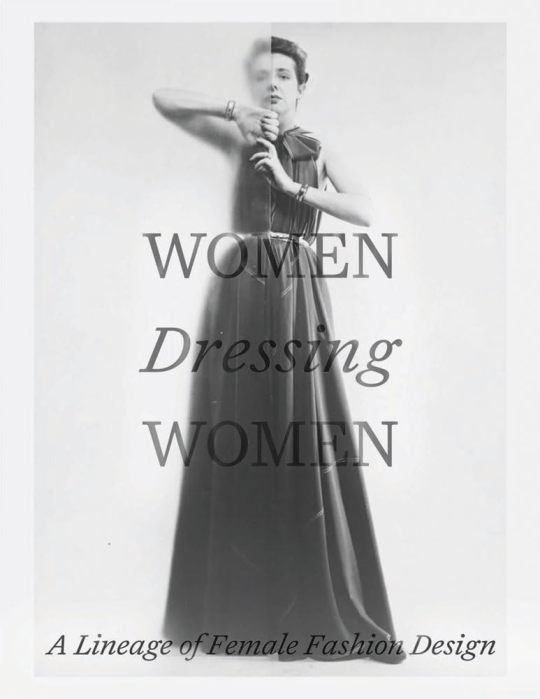
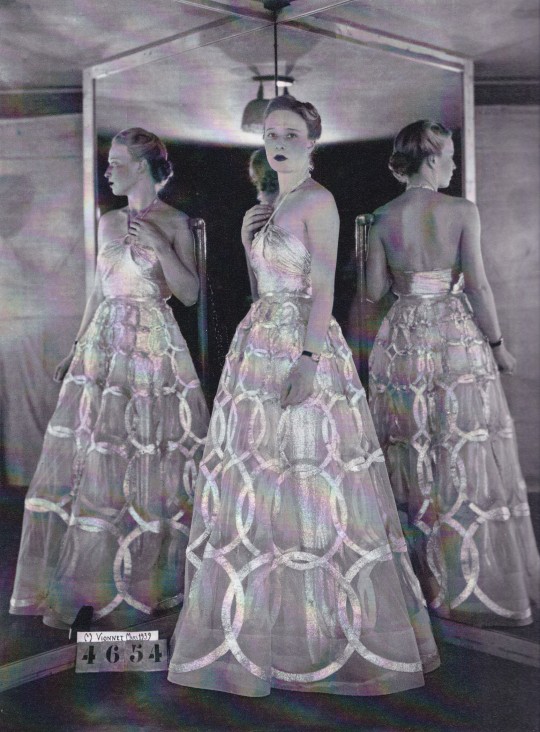

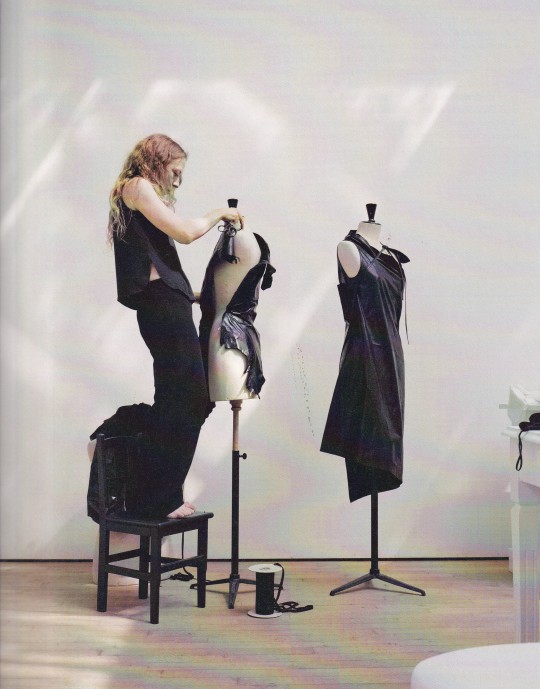
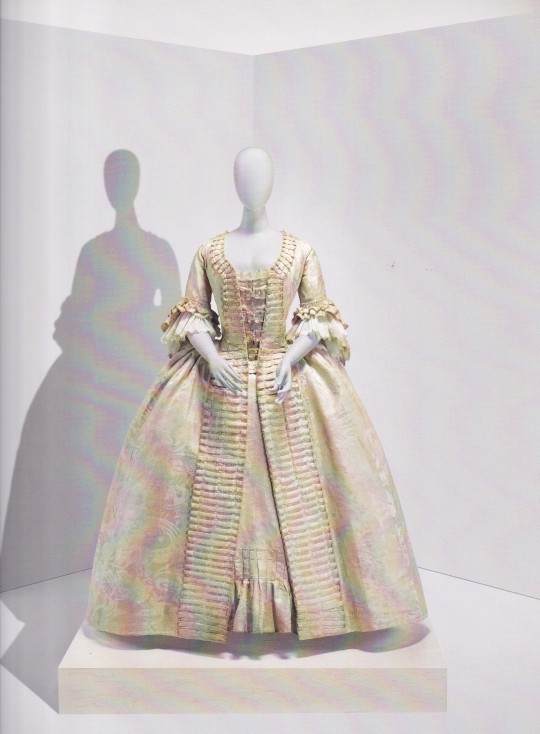
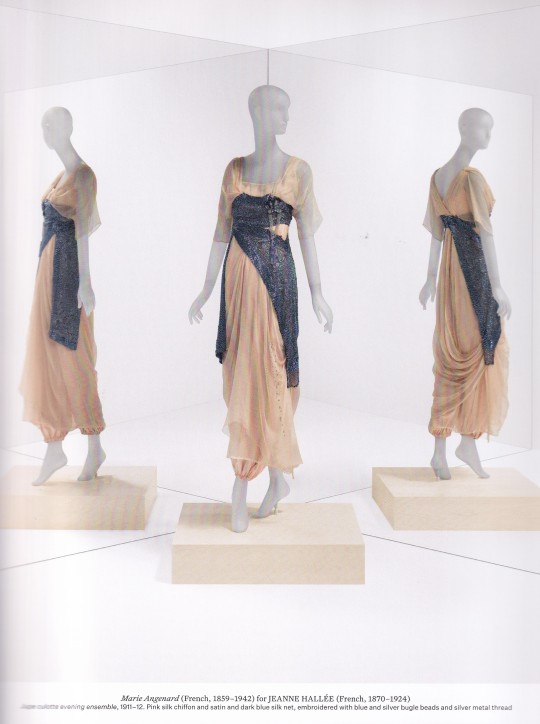

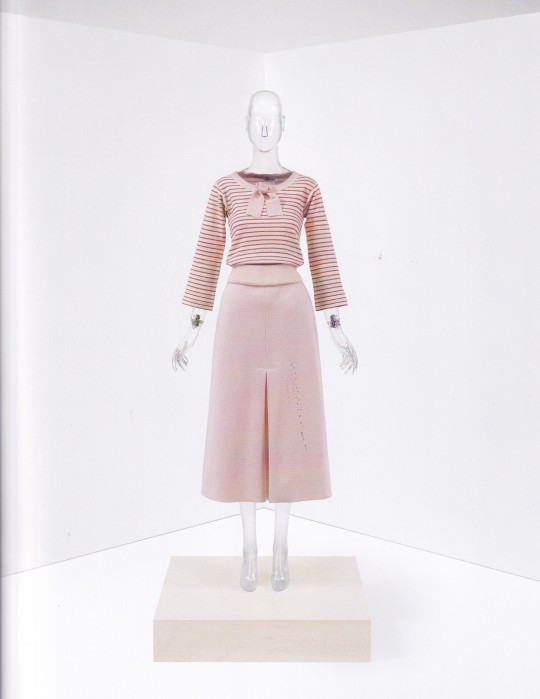
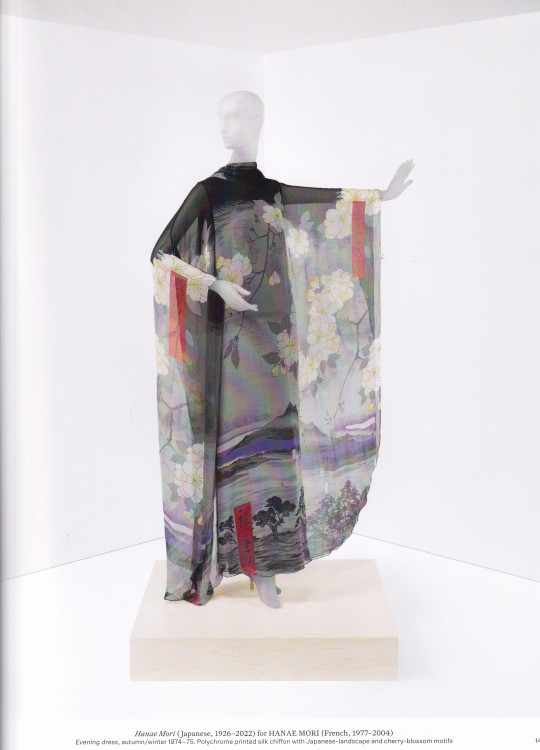
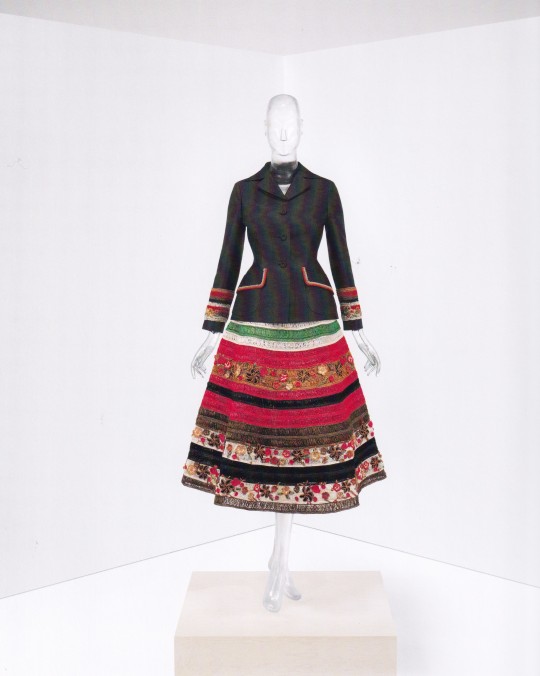
Women Dressing Women
Morgan Stanley
The Met, New York 2023, 212 pages, 24x30,5cm, ISBN 978-1-58839-720-1
euro 49,00
email if you want to buy [email protected]
The Costume Institute's fall 2023 exhibition will explore the creativity and artistic legacy of women fashion designers from The Met’s permanent collection, tracing a lineage of makers from the turn of the twentieth century to the present day by highlighting celebrated designers, new voices, and forgotten histories alike.
Women Dressing Women will feature the work of over seventy womenswear designers, spanning ca. 1910 to today, including French haute couture from houses such as Jeanne Lanvin, Elsa Schiaparelli, and Madeleine Vionnet, to American makers like Ann Lowe, Claire McCardell, and Isabel Toledo, along with contemporary designs by Iris van Herpen, Rei Kawakubo, Anifa Mvuemba, and Simone Rocha.
A catalogue, published by The Met and distributed by Yale University Press, will accompany the exhibition 4 Dec 2023- 3 March 2024
25/12/23
#Women dressing Women#fashion exhibition catalogue#Met New York 2023 2024#women fashion designers#Jeanne Lanvin#Schiaparelli#Vionnet#Isabel toledo#Rei Kawakubo#Hanae Mori#Zandra Rhodes#Miuccia Prada#fashion books#fashionbooksmilano
125 notes
·
View notes
Text
One Night Can Stretch Into Forever - A Catwin Modern AU
I'm very proud of my WIP, a modern take on Edwin x Cat King. Cat is a personal stylist, and Edwin is an English professor. They meet one night in a jazz bar. They both start to catch feelings almost immediately, but Edwin is determined to keep it casual. Rating: E (soft E, non-graphic smut) Status: Ongoing. No less than 1 chapter per week, sometimes more.
CHAPTER 1
A jazz club was not Cat’s usual scene. Normally, he spent his time at underground clubs and posh cocktail bars. Part of that was practical. As a stylist with rich and famous clients, he wanted to have his finger on the pulse of what was new and trendy. When one of his clients told him about a speakeasy that had been getting a lot of buzz, he was intrigued. He’d been seeing hints of 1920s-inspired fashion in next years’ winter previews his contacts had given him a sneak peek of, which made the jazz club even more intriguing.
London never had Prohibition, so the speakeasy vibe of Giggle Water was completely contrived. Fake or not, it was executed very well - from the hidden door at the back of a florist, to the exposed brick and brass finishings. He suspected the club might have actually been a Molly House that was given a jazz-era makeover. That would explain why, although the club was not explicitly a queer one, he saw many visibly queer people as he waited in the short line to descend into the club proper.
When Cat emerged from the narrow stairwell, he was greeted with a surprisingly open space with vaulted ceilings which suggested it was once a cellar for the historic building above. There was a small stage in the corner where a trio was playing klezmer music and the club was packed with young and fashionable people. That was a good sign that the visit was actually worth his while.
Normally Cat’s personal style leaned towards the garish and gender non-conforming. For once, he was there to see and not so much to be seen. His deep blood red blazer with subtle black brocade over a tight black t-shirt with a slight sheen and high-waisted, perfectly tailored slacks might be ostentatious on someone else, but on him, it was practically understated. His blond curls were tousled in an easy surfer style and he was wearing cologne that smelled like boozy cherries with a hint of musk. A diamond stud glinted in one ear and he was wearing a subtle amount of eyeliner to make his eyes pop and give them a slight cat-eye look.
As Cat scanned the well-dressed crowd, he started to mentally catalogue the vibe of the most well-dressed people. Waistcoats for women with very masculine tailoring were well-represented, as were asymmetrical blazers for all genders. A very masculine-presenting person breezed past him in a corset paired with wide-legged trousers with very high slits giving a flash of silver booty shorts underneath.
“Oh, yes,” Cat murmured to himself.
He’d have to get himself a pair of those pants. Maybe paired with a latex-look turtleneck and a diamond belt and ankle height go-go boots.
Cat had seen enough to know it was worth lingering awhile longer. It was still relatively early, and it was possible more interesting fashionistas and socialites would make their way into the club. So he got in line at the bar.
“The cocktails are quite excellent here. Though if you aren’t a fan of actually tasting the alcohol, you might find them strong for your taste,” came a masculine voice in a crisp, posh, English accent.
Cat turned to find a tall, dark-haired man in his mid-twenties. He was wearing a black and white patterned shirt with an identical tie, and an immaculately slim-tailored pair of black pants and a single breasted blazer that nipped him in at the waist. It was nothing groundbreaking fashion-wise, but it was trendy and well-tailored enough to catch his attention. He was holding a cut crystal glass with something dark and strong in it.
Cat gave him an obvious once-over, then grinned. “Well, I’d say that makes sense seeing as this is a cocktail bar,” he drawled.
“Oh, you’re American.”
“You sound disappointed.”
“No, not disappointed. Are you a tourist?”
Cat examined the stranger, one eyebrow lifted. He was having a hard time reading him. It felt like he was being flirted with, but it could also simply be smalltalk. There was a soft lisp to his voice and a certain flow to his mannerisms that made his gaydar ping. However, he’d made the mistake in the past, misinterpreting poshness for queerness. There was also a note of hopefulness from the stranger that made him think he wanted the answer to his question to be no.
“Resident,” said Cat. He smiled wide enough to show his naturally pointed canines that had given him the nickname in his childhood that he now used exclusively. His gaze flicked to the man’s full glass, then up to his face. “Unless you’re second-guessing your drink, I’m guessing you’re not in line. So?”
“Pardon?” said the man. He was holding himself confidently, but something in his eyes suggested nervousness.
“Are you going to offer to buy me a drink? Or have I…” he shifted a little closer, “...completely misread you?”
Continue reading on Ao3
#dead boy detectives#dbda#fanfic#ao3 fanfic#ao3 writer#dead boy detectives fanfic#cat king#the cat king#ao3 link#catwin#edwin x cat king#cat king x edwin#modern au#fic wip#dead boy detectives fic
35 notes
·
View notes
Text
The way one could interpret both Klytemnestra and Helen as more or less gnc.
Helen less so than her sister, if we're going by what is explicitly stated/intended(?) in at least some ancient texts. Klytemnestra's unambiguously made out to be masculine (especially in contrast to the effeminate Aigisthos), and while that, like effeminacy in men (Aigisthos again, Paris) is of course to paint her in a bad light, it's interesting to consider what that would mean for her.
(Does it chafe her, what's expected of her as a woman, what she's limited to? Does she not mind it, but always wanting more? The differences she might be getting out of her relationships with Agamemnon and Aigisthos, etc.)
But Helen, too, if we're willing to step away from any stated intent and maybe look more at the effect of some of what she says/does.
Narrative treating her, in the Catalogue of Women and the Iliad, as the more important, "dominant" (after a fashion) potential or actual spouse. This by the suitors wishing to be her husband (instead of wishing to lead her away as as wife), and Paris identified by being her spouse instead of the other way around. The way Helen wishes for a "better" man - that is, that Paris be acting more normatively. Because if he was more sensitive towards shame and common nemesis (like Hektor, for example) he wouldn't be so willing to be inconsistent on the battlefield, for one. Andromache wishes her husband less - if not manly, then less glory-seeking, perhaps. Helen wishes hers to be more like his brother.
The way Helen is certainly the more prominent and "dominant" character in speech between her and Menelaos in the Odyssey. Speaking first if she can, announcing things first, straight up taking over giving the interpretation of the omen Telemachos asks Menelaos for. It's far less obvious in the Iliad and Paris and Helen's interactions, because the current state of their relationship doesn't lend to the same sort of interplay we see in the Odyssey for Helen and Menelaos, but I still think there's something of that there, too.
It's the way she intimates some of the bard's role, the way she speaks of songs and fame in similar ways to the men concerned for their after-death. She cares about this with a consciousness that aligns her less with the women around her than the men.
Something in the way how both sisters are more similar than they're not, then.
50 notes
·
View notes
Text
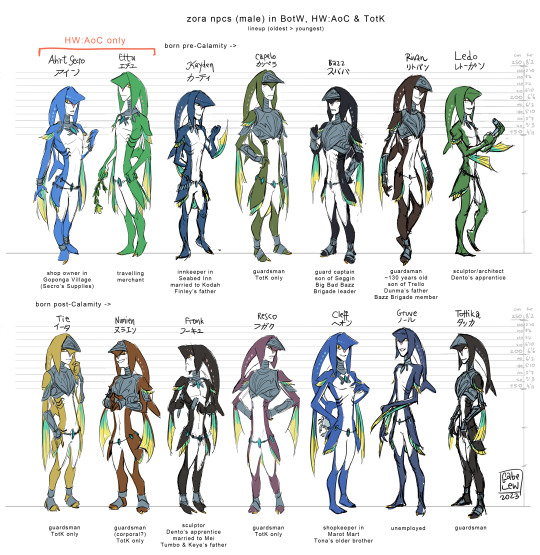
I updated my Zora lineup from 2021 with the new TotK characters (and added the AoC guys too while I was at it).
To my knowledge these are all the named NPCs across the three games who use the generic adult male Zora model. I liked the idea of giving them more personality and trying to figure out unique features, all while staying faithful to the model (so no accessories, body modification etc).
female NPCs | elders and kids | unique characters
More details on each character (all 14) under the cut:
Ahrt Secro and Ettu are the merchants that exist only as character portraits, but I decided to count them as individual NPCs regardless. I made an exception in "no accessories" rule for Ahrt Secro here, because of his... unconventional name (and him living in Goponga instead of the Domain); he's justified in not following their fashion standards. Ettu's only character trait iirc is that he dislikes plants. Which make up most of his stock. Rip.
Kayden is the oldest non-elder Zora guy (140ish?), calm, responsible, etc. He's an another accessory exception, with the little belt attachment. He's married and it's the "zora armor" he got from Kodah. I like to imagine that non-royal Zora women also propose with "armor", just bit more budget friendly - a single accessory or a piece of jewelry.
Capelo has basically no personality, his only few lines point to him being older and somewhat responsible. So I put him here and made him... idk, look big and serious.
Bazz! He's perfectly average when it comes to height and looks, but visibly more buff than most Zora guys. Also on the older side.
Rivan's whole thing is being Very Tall and Very Pretty. In my canon he's basically the most handsome guy in the Domain, with his long fins, smooth features and warm brown colored scales.
Ledo is like, the most average guy you've ever seen. He looks younger than he is but has no special features otherwise. Surprisingly level headed. Not very fit (for Zora standards).
Tie is another one of the new undercharacterized TotK guards, his only thing being that he complains about being out of shape. I think I like his design the least, but come on, I had nothing to work with here.
Numien, the only new guy who actually had more than two lines, all of them making him the most annoying prick in my eyes. He's just... too enthusiastic and eager to praise his superiors. I like to imagine Bazz despises him for being such a kissass (Bazz is canonically pretty judgemental) but can't do much about it. The guy is competent enough to be put in charge of the Lookout Landing squad after all. Anyway, I did my best to make him look at least a bit unhinged.
Fronk, the only man in the domain whose eyebags could compete with Bazz's, courtesy of his airhead wife Mei. He's also wearing the "zora armor" she gave him.
Resco wins the prize for least characterization. His only single trait is that he admires Gaddison. That's it. So I made him try to emulate her energy in his lineup pose.
Cleff, the shopkeeper with crab obsession. One of the prettier younger guys, although the crab thing is not working in his favor. The last one of fully adult guys in the lineup (around 90ish).
Gruve is, amusingly, the one sole unemployed Zora guy. His occupation is therefore officially, A Problem. He's very much the tall lanky teenager type.
And Tottika, another tall lanky teenager (70ish), but this time with a job. It's not canon, but he's commonly considered a twin brother of Torfeau and I quite like this idea. He's not the smartest but tries his best.
That's it, thanks for reading if you did! Next up are the ladies, which I have sketched out but not colored yet. Also I'm still pondering if I want to do elders and kids, just for the sake of having all the Zora properly catalogued...
#zora#totk#botw#bazz#tloz#their heights and ages are very vibes based tbh#you can see which ones were drawn in 2021 and which in 2023 lol#the way i draw zoras changed very slightly over time#they got less skinny#the japanese names are mostly for myself#i need them once in a while and they arent properly catalogued anywhere
147 notes
·
View notes
Note
Hiii, I love your page and you helped so much with research. I am doing a project for my costume course, I have to design costumes from 1895, 1894 and 1896 are kinda accettable, but I having problems with creating the moodboard for every outfit. I really can't find photos or archival pieces for men, especially a character who is supposed be a 17 years old and I can't really find photos/illustrations of children nightwear (boys). I know by heart every archive of every museum and I even looked on internet archive at old magazines, but still I can't find much. Do you have any niche sources that you would recommend? Sorry to bother you, just a student losing her mind
Thank you so much! And sorry for the wait! I hope you're course is not over already and I'm late with the answer :')
17 years old boy would be already dressing in basically same clothing as men. With nightwear it's also pretty easy, since all people wore basically the same nightgowns, only details would vary. Here's an 1874 example of children's nightgowns, which are long white dresses gathered at the neckline, with long sleeves and often a bit of collar. This is the basic shape everyone wore. They tended to be more simple for children and men. Women, especially rich women, might have some more decorations. Night chemise was also an option for women. It's what it sounds like and shaped exactly like a chemise, with just maybe some differences in details.
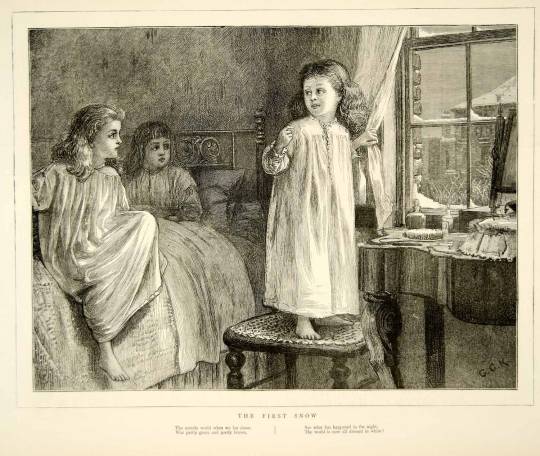
Men and boy's nightgowns were usually called nightshirts and while they were mostly the same as women's nightgowns, they were usually a bit shorter by 1890s, usually covering just the knees. Here's an add for children's undergarment with a nightshirt for boys too from 1878.

As for adult men's nightshirts, here's first a 1891 ad with unfortunately quite poor illustration of a man's nightshirt, but if does show the popular style for men, turned down lapels. Here's another example of that style in form of an extant garment form 1900s.

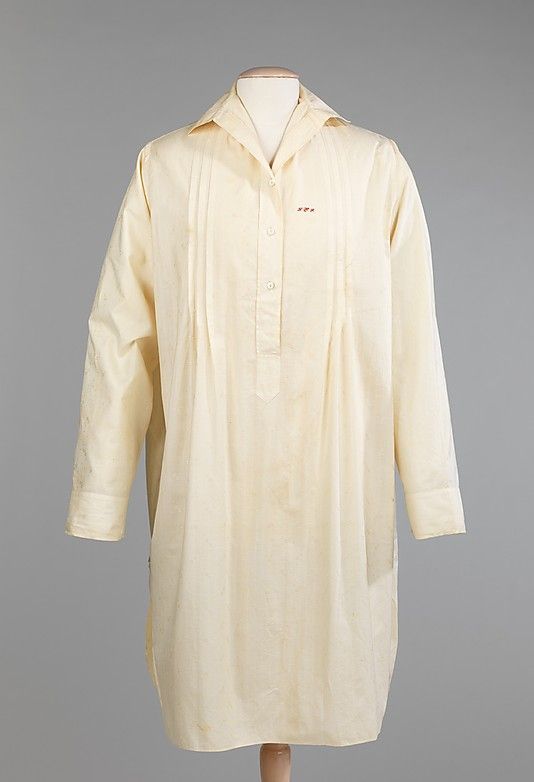
By 1890s pyjamas - shirt and trouser combo - had become fashionable nightwear for men, though nightshirt were still used well into 20th century. Here's an add from 1901 showing both nightshirts and pyjamas. Pymajamas were also used as fashionable evening negligee and while in 1890s nightshirts were still usually white, pyjamas were not and often had a pattern.

Underwear and nightwear are types of clothing that rarely survive history, since they are usually not fancy so they are not preserved diligently and are worn close to skin therefore quite quickly are worn down. That's why ads (in periods when they started to become a thing) are great sources for those kinds of garments. The last add is from a catalogue for mail-order clothes. These are usually excellent sources for the basics, like underwear and nightwear, which were already sold as ready-made garments in stores and by mail-order businesses by 1890s. Internet archive has several digitized fashion catalogues from around the time you are looking for so I suggest looking through them if you want to find more specific examples. This was really the first that came across me that was close enough. Some libraries also have excellent digital collections of old ads, like the New York Public Library (from where the other above ads are from), so their collections are also worth going through.
Hope this helps and I hope this is not too late for your course project!
#historical fashion#fashion history#dress history#victorian fashion#history#answers#nightwear#primary sources#historical ads#historical men's fashion
34 notes
·
View notes
Note
MORE TRANSFEM KIERAN
hii kicks my feet. twirls my hair. does a little spin. i wanted to write these out sooo much sooner but i got sick :(( luckily!! im here now!!!! so today ive decided to share some camp transition hcs. personally i dont actually think she would have the time to transition in the gang.. buuuuut its still nice 2 think about :) maybe later ill make a post about the domestic au ive got for her. smiles big and wide
sean is immediately supportive of her transition. this isnt really cause for suspiscion, sean is also trans of course. until his true intentions are revealed and hes simply staring at a womens fashion catalogue in the undergarments section holding it out to kieran and pointing, "i think youd look good in that one ;)"
eventually kieran is doing some of the ladies workload, she is one of them, after all (though i imagine her true role even post transition would be a little more mixed, like karen, who can be seen going on watch and such). of course this means grimshaw eventually coming by to nitpick her the same way she does for the rest of the women. chastised for not being ladylike enough, or being improper. i imagine susan and kieran get along pretty well, honestly, i can imagine kieran being a very effective little worker bee for her that goes along with whatever she says in an attempt to pass. susan clearly knows about being a woman. kieran wants to be a woman. its perfect!
you would think if i headcanoned bill as gay and kieran as a woman i would believe that bill eventually loses his crush on her. you would be wrong. very wrong. i think it maybe seems that way at first, but realistically bills manner of attraction has simply shifted. with men you can be rough and rowdy and awful and its expected, even when trying to court one, but trying to court a lady? now, thats a long process of wearing her down with charisma, wooing her, being a gentleman. things bill williamson sucks at. really badly. i think he would simply stop making moves on her because he just doesnt know how, but i dont think his actual feelings change even remotely
thusly, people start looking at bill weird the times he gets drunk and does dare to flirt with kieran. i imagine people would offer to have a talk with him about it, but she would just smile and shake her head, because bill stumbling over his words to drunkenly call her pretty was one of the best feelings shes ever had
i doubt hosea and dutch would care. really. i think either way they keep her stationed with the horses. it makes her happy and ultimately she is helping around camp more now. theres no loss of hands to complain about, they werent taking her on jobs anyway
her and molly!! i knowwww molly is saying some shit like "youre clearly just pretending, wearing that skirt with that lipstick" and it very quickly snowballs into convincing arthur to take them out on the town and buying kieran some clothes with at least a little class. maybe they kiss while out there. whos to say
look. all im saying is. if kieran goddamn duffy can become a woman then sadie adler can become a man. and sadie adler fucking haaaaaates that the start of his transition was watching an o'driscoll transition first. and i also think it would be really funny and i wanna torture that tboy some more.
grows her hair out for sure, i think in any other setting she would wear it down more than up, but due to the nature of her chores at camp, shes keeping the hair off the back of her neck
i can imagine mary-beth and her sitting together on a quiet night, kieran listening to her talk about whatever dime novel or bodice ripper she'd been able to get her hands on lately. its nice and all, but shes mostly just listening, shes not much of a reader, and mary-beth is clearly talking like she wants the man. until, out of nowhere, shes bringing up how the savior is always the men, and how, sometimes, it made her even more giddy to picture the "men" with long hair and even more identity protection, and thinking about them being women masquerading as men. seemingly, kieran is a lot more engaged now that mary-beth is talking about being saved by a woman that is stuck looking like a man for whatever reason. of course, mary-beth doesnt miss this little detail. theyre sharing drinks by the end of the night.
i think one of her first gender moments was getting her first skirt of course. but i think it only really hit her when she had to mount branwen sidesaddle for the first time, and get used to riding him like that. it was kinda like learning to ride a horse all over again. it gets branwen involved in her transition as well and i think thatd be crucial for her; bonding with her beloved horse in a new way, being a woman while doing it. even if he wasnt a part of such a big moment for her, i still think she would gush to him about all the womanly things she got to do that day. branwen is always the first to hear when a day goes by and she barely feels like a man the whole time.
i hope this was enough food to keep you and any other transfem kieran enthusiasts fed for a bit ^-^
#rdr2#kieran duffy#red dead redemption community#red dead redemption 2#verdemoun#i should also do a gang sexualities and genders hcs at some point..
17 notes
·
View notes
Text

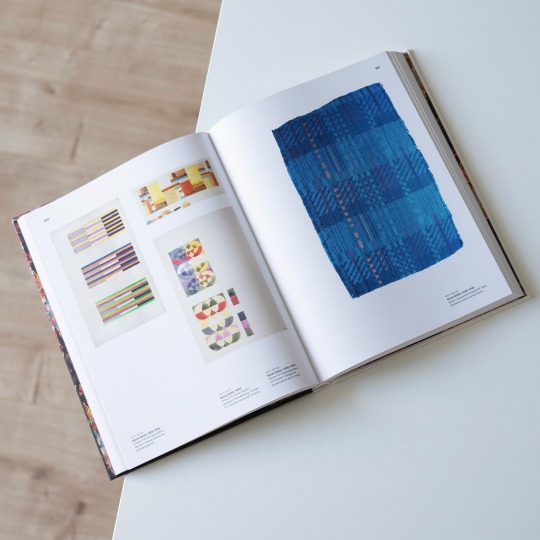
In contrast to his Bauhaus colleague Gunta Stölzl, Johannes Itten’s deep involvement with textile design is largely unknown. But in fact it was the book „Méthode de composition ornamentale“ by Eugène Grasset which explicitly dealt with weaving that had a profound influence on his engagement with abstraction. And later at the Bauhaus Itten, together with his fellow master Georg Muche, identified the potential latent in textile art and actively supported Gunta Stölzl in her effort to establish a textile workshop. Revealingly, the latter was the only commercially profitable Bauhaus department. In this context Itten also recognized the brilliance of Stölzl’s work that was regularly discarded as „women’s art“. Consequently, their relationship outlasted the Bauhaus and their professional paths crossed multiple times after Stözl's emigration to Switzerland.
Itten’s and Stölzl’s crossing paths, their Swiss networks as well as their textile works at long last are the subject of the Kunstmuseum Thun’s current exhibition „Gunta Stölzl & Johannes Itten: Textile Universes“ which runs through December 1 and is accompanied by the present catalogue published by Hirmer Verlag. The catalogue starts out with a Stölzl’s outline of the genesis of the Bauhaus’s textile workshop in which she played a pivotal role and which was characterized by a great deal of improvisation, self-initiative and experimentation. The expertise she gained in a just a brief period of time in turn led Itten to invite her have her organize the weaving at his newly founded Ontos workshops.
When Stölzl emigrated to Switzerland in 1931 she founded S-P-H Staff in Zurich together with fellow Bauhaus graduates Gertrud Preiswerk and Heinrich Otto Hürlimann. The company was rather short-lived and produced carpets and upholstering for the home. Much more successful but largely neglected is her long-term directorship of the Handweberei Flora workshop where she designed fabrics for fashion, furniture and curtains. After her retirement in 1967 she fully dedicated herself to her textile art.
After a brief interlude in Krefeld Itten in 1938 also returned to Switzerland and took over the helm of Kunstgewerbeschule Zurich, a position he held until 1953. In 1945 he also became head of the Textilfachschule in Zurich and on various occasions produced very interesting textile works that are presented in the catalogue alongside Stölzl’s.
The former not only by means of the excellent reproductions but also due to the highly informative essays shed light on the outstanding textile art of the two former Bauhäusler. A highly recommended read!
21 notes
·
View notes
Text
Expanding on some thoughts from earlier, there is a real hatred of formality today, and I think that is a large reason of why our art is so terrible now. It may be the common thread for why everything is terrible and people dress like shit and everybody is rude and so on.
I first noticed this on etiquette videos. Now, I never really cared too much about etiquette, besides practicing the very basic rules at the table, but I would get some random video recommended to me about the "proper way" to eat such and such food at the dinner table, and I would be curious, so I'd watch, and the comments are full of people seething about how rich people can't just "eat normally". People viscerally mad that the queen (God rest her soul) ate a banana with a knife and fork. Insult after insult. Not a single person commenting on the elegance of the method or any sort of curiosity about where these customs even come from. Just pure seething hatred against rich people doing something differently than you.
Or take menswear. With the rise of that one twitter account that owns the chuds with menswear fashion tips maybe this one is dying down a little bit, but not by much. So many classic gentleman's fashion videos are full of comments from people saying "no thanks, I'll just wear jeans and a shirt", "who the fuck cares if I wear sneakers with dress pants", "who the fuck would wear this" and so on, as if a video with tips specifically for people trying to dress like the 30s is a judgment against all men who do not have such a desire and for some reason felt the need to watch the video and shit on it.
There is obviously class resentment against the upper class in many of these complaints, but what kills me is that so much of this stuff has lost its class signifier, so people are just pissed off because of their own associations of the past that they can't let go.
Take classical music. Nobody really has an excuse to think that classical music is only an "upper class" thing anymore. Literally anybody can get into classical music now, and not just the entry level shit your grandparents rich bosses listened to, you can find the complete catalogue of totally forgotten composers online with no hindrance whatsoever. You do not have to go to the symphony or opera or be subscribed to an expensive record club to listen to classical music now, you can just find it freely on YouTube or spotify.
I remember seeing a post here that claimed classical musicians love to make their music obscure to keep out the normies, and that couldn't be further from the truth. What would we gain if nobody ever actually listened to us? We can't rely on the old timers - they're all dying. We're literally begging ordinary people to discover classical music. But many of them think that classical music is "above them" and they resent that and refuse to ever even try. I once had a gay leftist mutual explain that to me, where she said that she finds the stuff I post "intriguing" but doesn't want to get into it because if she becomes a fan then she'll end up in a community that doesn't want her to be in it (as if the classical music community isn't FULL of gay leftist women). How does that make any sense?
Or literature. There really are no bars in the way to discover classical literature. You can go on project gutenberg and read all of the classics for free. They're just right there. Yet classics are still coded as a class thing and reading classics isn't a "normal" thing for "normal people" to do, so they won't, and they'll continue to look down on people who earnestly like this stuff. This is usually coming from the same crowd that wants YA fiction to be treated on the same plane or higher than the dead white men.
The modern aesthetic, as I explained in that other post, is a sort of mundane realism. Nothing out of the ordinary, nothing elevated, the movies have to have realistic speech (meandering, full of umms, delivered like a normal person, not like an "actor" "acting"), the writing has to be stream of conscious and casual, and so on. The hatred for formality and the perceived "upper class" guardrails (which aren't even real) are part of this.
The implications of this are more serious though than just that art sucks and people are walking around in pyjamas at stores and everybody online is rude to each other. Again, it's class resentment. You have to realize that we're in some pretty bad times when class resentment is pandered to by every single aspect of society. The worship of Luigi Mangione is not a completely unrelated phenomenon, nor is any of the calls for class war in the aftermath of his arrest.
The end goal of this is that they want to see blood. I know it seems silly to link mocking the queen eating a banana with a fork to people killing CEOs, but really, that is the end goal of the breakdown of formality. The low class that all Americans now share regardless of how rich they are (and it's cliche to point out that so many of these leftists are supported by rich parents) leads to bloodthirst because it's all rooted in resentment.
Remember how they celebrated the death of Rush Limbaugh. Why is that? It's not that he had "terrible" views (that most of our normie parents agree with), it's that he was a class traitor. He spoke out against the cultural revolution, and so we can openly mock him when he dies. Even better when a systematic figure like Scalia dies, since you can actually blame real things on him. It's not a surprise at all that the worst people you can imagine also supported the open killing of Brian Thompson, who actually represented the classic American dream of rising to the top from nothing (but they don't want the top to exist and they'll make up any retarded thing they have to to justify hating him).
All of this needed the breakdown of formality to happen, because in previous generations, formality and etiquette was what made you keep those stupid thoughts to yourself, even if you personally felt they were justified. And it's not a coincidence that the party most obsessed with informality is the bulk of the people celebrating. In previous generations, people would put their differences aside whenever a president was assassinated or almost assassinated, while today people cheered on Trump's two attempted assassins and joked that they shouldn't have missed.
Don't kid yourself in believing that these people would have been a class act if the assassination was successful. These people wanted trump to get shot on TV and they were going to make memes with the bullet in his head and they were going to post it in reply to all of your posts and they were going to rub it in to all of their family members. That 100% would have happened if Trump died, no question about it.
And do you think things are going to get more civil from here? No. There will be more violence, there will be more celebrations, art is going to keep getting worse, the slop is going to get sloppier, and we're eventually going to be conquered and many people are going to die.
7 notes
·
View notes
Note
Serafine’s outfit from the trailer slays, of course, but I’m curious — just how common/realistic was it for women of her time period to wear suits? Was this something she’d have had custom made? Are there historical examples?
It wasn't especially common, but it was definitely not unheard of. Masculine-inspired styles for women were in fashion at the time in many ways. Drag shows were popular in clubs and theater venues. Actresses and female entertainers would dress in suits or tuxedos for publicity shots all the time. And trans and gender queer people did indeed exist. So, one could conceivably acquire a suit to match any body shape.
Of course, how easily someone could openly exist in society in garb considered unbefitting of their perceived gender depended a lot on their surroundings and station in life. On the other hand, you might be surprised by what sizable segments of society deemed permissible in the 1920s...that it later back-pedaled on in the economic tumult of the 1930s. Anyway, yes, Serafine would have had her suits custom tailored. Ordering relatively cheap, generic clothes out of a catalogue was becoming ever more popular in the 1920s, but people still generally had more custom-fitted clothing in their wardrobes than we do these days. Going to a tailor would have been a pretty commonplace thing. I wrote up a whole article about suits in this context a while back. You can find it here:
705 notes
·
View notes
Note
Do you have any ideas/evidence as to how skirt length varied for women with limps/disabilities? I'm planning and making a historybounding wardrobe for around 1900-1908, and I am feeling the need to make my skirts, instead of instep length, around ankle-bone length or slightly shorter even than that, just so I don't trip and rip my hems out - at my height it's between 32 and 34 inches. I'm using a lot of plates for "Toilettes de jeune femme ou de jeune fille" for inspo because as a petite 24 year old who looks 16, I can still do that. Looking at various photos of actual normal women it wasn't horribly uncommon to make your skirts four or five or even six inches above the ground, but in high fashion I am drawn to the more sporty skirt styles and evening skirts for dancing for this reason. All of the recorded catalogue skirts are made quite long for quite tall people - to be hemmed as desired.
The thermoregulation is so good with historical dress that if I wear certain underwear and layer properly, I don't get full body spasms and pain at the slightest breeze. It's lovely, but I also need to get around effectively.
I'm so glad it works well for you re: thermoregulation! And of course, being in fact a modern lady, you're not bound to strict historical accuracy if you need to modify things to allow for easier movement.
(Even most normal- non-rich, I imagine you mean? -women often wore instep-length skirts, though, with modifications as needed for work and/or sporting activities. That's probably where you're seeing the shorter hems)
Women with mobility issues did exist back then, of course, but I'm afraid I don't know much about how they may have modified their skirts. Princess Alexandra had a limp after a bout of post-partum rheumatic fever left her with a stiff leg in 1867, but her skirts generally seem to be of normal length in photos. Of course, those are official portraits, and her nature as a public figure means that any image of her would be tightly controlled. she couldn't avoid limping in IRL public appearances, though, which I assume is how it was known generally. there's a rumor that ladies began limping on purpose to copy her, for Fashion Reasons, but that sounds a bit far-fetched to me.
I'd imagine that, much like in working situations, the rule was "practicality first?" Sorry I couldn't be more helpful on the history here!
108 notes
·
View notes